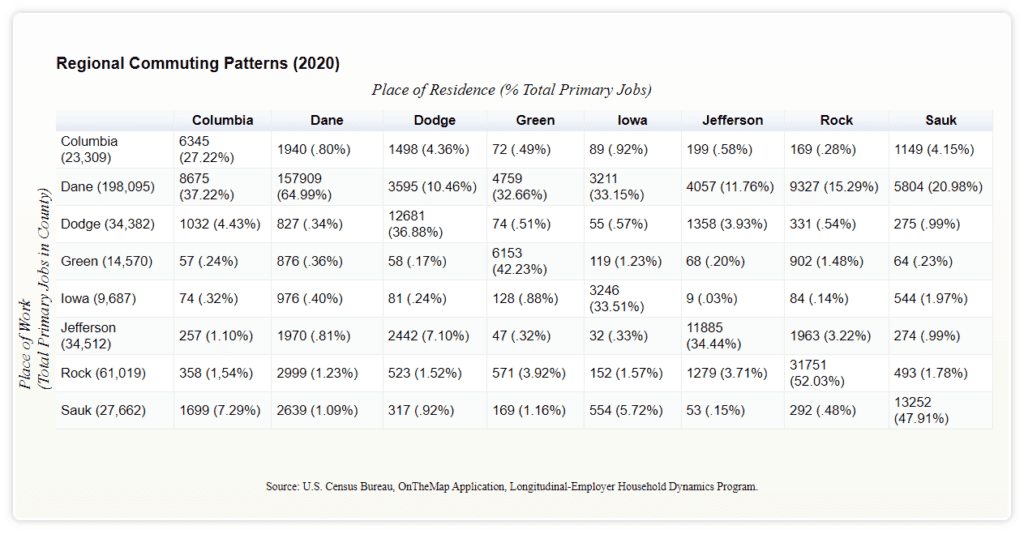As our cities expand and industries diversify, understanding how people move within a region becomes increasingly crucial for economic development organizations (EDOs). Here at MadREP we track regional commuting patterns on our proprietary data dashboard because they serve as a compass for steering sustainable economic growth.
Insights into Labor Market Dynamics
Tracking regional commuting patterns provides invaluable insights into the dynamics of the local labor market. By understanding where workers live and where they commute to for employment, EDOs can identify areas of labor surplus or shortage. This information becomes a powerful tool for shaping workforce development strategies, attracting businesses that align with local skill sets, and fostering a more balanced job market.
Infrastructure Planning and Investment
Efficient transportation infrastructure is the backbone of any thriving economy. Analyzing commuting patterns helps EDOs identify transportation bottlenecks and areas in need of infrastructure improvements. By strategically investing in roads, public transit, and other commuting infrastructure, regions can reduce commute times, enhance productivity, and attract businesses seeking well-connected locations.
Housing Market Dynamics
Commuting patterns are intricately linked to housing choices. Understanding where workers choose to live in relation to their workplaces can guide EDOs in addressing housing affordability, urban development, and zoning regulations. This information aids in creating communities that are attractive to the workforce, promoting a healthy balance between residential and commercial spaces.
Environmental Sustainability
Commuting has environmental implications, from air quality to carbon emissions. EDOs invested in sustainable development can utilize commuting data to encourage the use of public transportation, cycling, and other eco-friendly modes of travel. By strategically planning business districts and housing developments, regions can minimize the environmental impact of commuting, contributing to a greener and more sustainable future.
Talent Attraction and Retention
Businesses are drawn to regions with a skilled and available workforce. By tracking commuting patterns, EDOs can identify areas with a high concentration of talent and implement strategies to retain and attract skilled workers. This, in turn, makes the region more appealing to businesses looking for a skilled labor pool, fostering a cycle of economic growth.
Policy Formulation and Decision Making
Commuting data serves as a compass for policy formulation. EDOs can tailor policies related to land use, transportation, and economic incentives based on a deep understanding of regional commuting patterns. This data-driven approach ensures that policies align with the actual needs and behaviors of the local workforce, promoting inclusive and sustainable economic development.
To Sum Up
“In the fast-paced realm of economic development, the ability to evolve is key. I believe strongly in the power of tracking regional commuting patterns,” says MadREP VP of Strategic Partnerships Gene Dalhoff. “It’s an essential tool that offers a nuanced understanding of the local economic landscape. By understanding the movements of our workforce, we can make informed decisions that foster sustainable growth, create vibrant communities, and drive our region into a future of prosperity and resilience.”



